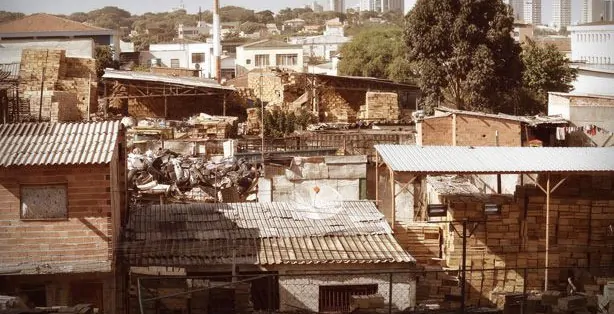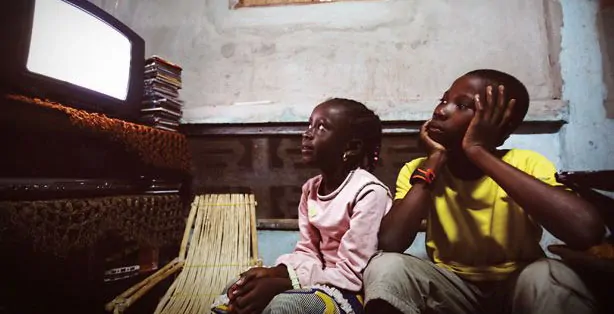
As little as a few decades ago, those caught in the unforgiving downward spiral of poverty in third-world countries had little means of drastically improving their lives. Lack of knowledge and resources, combined with often corrupt aid, fed a mind-set ruled by oppression and hopelessness, locking communities firmly behind the bars of poverty.
Then, in the 1970s, Professor Muhammad Yunus, head of the Rural Economics Program at the University of Chittagong, in Bangladesh, introduced an experiment he called “Village Banking.” It was a concept that would forever change the world of banking—and poverty.
THE ORIGINS OF MICROFINANCE
The banking system that Yunus designed provided credit and banking services for Bangladesh’s rural poor. Grameen Bank began to offer noncollateralized loans, meaning there would be no legal documents allowing Grameen to seize property if the loan wasn’t paid back. In addition to credit, the bank also provided information, help and guidance to its borrowers.
Thirty years later, Grameen Bank continues to extend banking facilities to the poor. Grameen has reversed the age-old vicious cycle of “low income, low saving and low investment,” and created a virtuous circle of “low income, injection of credit, investment, more income, more savings, more investment, more income.” Grameen eliminated the exploitation of the poor by money lenders and created opportunities for self-employment for the vast multitude of disadvantaged, unemployed people in rural Bangladesh.
Grameen Bank is now owned by the rural poor whom it serves. Borrowers of the bank own 90 percent of its shares, while the government owns the remaining 10 percent.
Jan Twombly is a Boston-based consultant who specializes in collaborative business. Twombly was involved in microfinance in the 1980s and 1990s, and was a delegate at the first Microcredit Summit, along with Yunus and several other key people in the movement. She’s still excited about the results of Yunus’ vision.
“In Bangladesh, they’ve changed the culture by empowering women to own property,” Twombly says. “It is accepted in development that when a woman makes money, the first thing she does is put it into her children’s mouths, then their health, then their education. It’s self-fulfilling in terms of what it’s done.”
David Bornstein, author of The Price of a Dream and How to Change the World, went to Bangladesh with Professor Yunus and was inspired by his accomplishments. “He created a structure that enabled millions of people to unleash their potential, solve their own problems and move toward their aspirations,” Bornstein says. “What I found interviewing people in Bangladesh is that a small price ($100–$200) enabled people to move toward their dreams, the same dreams people have everywhere—autonomy in your life, rather than [being] under the yoke of an abusive lender or abusive husband; a clean, dry home; and education for your children.”
IT’S ALL ABOUT TRUST
While it sounds nice to fund the poorest of the poor, is it practical? Can these people actually repay their loans? Commercial banks have typically avoided lending to the poorest, for fear they would never see the money again. However, Grameen Bank and other microlenders have observed repayment rates that are essentially the same as those of any commercial bank—around 97 percent.
Traditional lending practices prevented more than half the world from participating in a banking system, but in the last 10 years, microfinance has proven false the assumption that poor people are unbankable simply because they’re poor. Bornstein says he sees the floodgate opening.
“People realize they can do business with [the] poor,” he says. “Grameen Bank is [now] only one of many microlending institutions around the world. There was a time when Grameen was the only microfinance institution of significant note. Today [it serves] probably less than 7 percent total of the world’s clients. This is an industry now, not just an institution. What you’ll see in the future is a lot of good stuff , and a lot of bad people taking advantage.”
MICROFINANCE IN ACTION
Michael Lundquist is CEO of The Polus Center for Social & Economic Development, a nonprofi t organization that provides humanitarian aid and microcredit in third-world countries. Ten years ago, the center began working with the disabled on an international level. The organization’s first foray was in Leon, Nicaragua, in 1999, when they partnered with local citizens to establish Walking Unidos, a prosthetic clinic. At that time, there was a need for financial and material help, but no capacity or infrastructure to ensure that those people most in need would receive the help. The biggest challenge was to help those who suffered limb loss and their advocates raise funds and develop their capacity as an organization.
{sidebar id=11}
In addition to Walking Unidos, Polus recently discovered a situation on Nicaragua’s Atlantic coast that required immediate attention. Before the recent hurricanes hit, the socioeconomic condition for the indigenous people of the Miskito Coast of Nicaragua was dire. Now, it’s worse. Most families in this region rely on income from lobster diving. However, the spiny lobster population of the Miskito Coast is quickly declining. Industrial lobster divers are forced to dive two to four times as often as is recommended per day, and in deeper waters, increasing both the risk and the number of accidents due to decompression sickness.
Diving accidents are serious business; divers who are untrained in accident prevention and in fi rst-aid treatment often suffer from decompression sickness, also known as “the bends.” Divers acquire this excruciating and debilitating condition when they dive too deep without proper equipment, then rise too quickly to the surface. They are left permanently disabled, and often paralyzed. This problem could easily be prevented through adequate training and alternative sources of income.
Divers are aware that they need training. Still, they resist it. In the past, groups from outside the region have tried to help the divers. The Miskito Indians are an indigenous tribe with a rich culture and distinctive language. In recent years, the isolated community has lived simply; attempts by outside groups to help while imposing their own language, culture and values on this proud tribe have not yielded positive results.
In communities such as Puerto Cabezas and Dakara, dozens of divers are now no longer able to work, support their families or participate in the community. Lobster diving dominates the economy and passes down from father to son, generation to generation.
In February 2007, Lundquist and others from The Polus Center interviewed people with disabilities along the Atlantic Coast. Individuals, families and whole villages face complex needs. Since the recent hurricanes, many families are now homeless.
At this time, The Polus Center intends to help the indigenous people of the Miskito Coast identify opportunities for economic development. Polus will send representatives to the area to model sustainable economic practices while also increasing members of the organization’s understanding of Miskito values, culture and socioeconomic needs. It is common business practice to build relationships, so all parties feel they can trust each other. Yet all too often, the poor are disenfranchised and not allowed the opportunity to build solid business relationships with those who offer help. Lundquist insists that Polus operate on a personal level, even though the Miskito divers are at an economic disadvantage. “We must build trust with these people as we would with any other business associate,” he says.
Polus’ first initiative, the Miskito Intensive Language Learning Institute (MILLI), will empower a select group of Miskito people to run a for-profit business while promoting Miskito culture, preserving Miskito language and creating trust between Miskito divers and volunteers from the United States. The organization has identified a candidate in Dakara to head MILLI, and is now in the process of fundraising to achieve its ultimate goal of helping people help themselves out of poverty.
FAITH-BASED LENDING
Though most do not think of Grameen as a faith-based lending institution, it was in fact started by a Muslim, in a Muslim country, and it has arguably remained the most successful economic experiment in the developing world.
In the Jewish community, there are several associations that offer interest-free loans to those in need. There does not seem to be a Christian equivalent in the lending sector. Historically, Christians have given charity to the poor, following the lead of certain teachings like Jesus’ proclamation, “What you do for the least of these you do for Me.” While generosity is scripturally rooted, to some it has created negative images of those in need as “takers” or “burdensome.” By contrast, microfinance allows those people to help themselves, and there are numerous scriptural references regarding loans.
Author and speaker Joel Block feels it is time for more religious institutions to take the initiative to set up sustainable organizations that help their communities, with zero-interest loans for those who most desperately need money but have the least chance of getting it. Sometimes people just need help,” he says. “If you want to preach, walk the walk.”
THE FUTURE OF POVERTY
While experts agree microfinance is an important component in the elimination of poverty, they also agree it is not a silver bullet that will completely solve it.
Bornstein does believe poverty eradication is possible in our lifetime and that microcredit is one of the most important tools we have to achieve this. He claims we’re en route to meeting current development goals that aim to reduce poverty by 50 percent by 2015. Yet, Bornstein says, it’s important for everyone to use the same definitions.
“People think of poverty in different ways,” Bornstein says. “If you think everyone should have a house and a car, that’s one question. But if what you mean when you say eradicating poverty is meeting basic human needs—caloric consumption, potable water, shelter, access to education and basic human protections under the law, health care—if a person is missing one of these things you could consider them poor. If you look at the most basic things—hunger, education—it is totally doable, given the tools that already exist. The big thing is largely giving people the encouragement to try. If you break someone’s spirit, they won’t try, and nothing will happen.”
Lundquist believes in microfinance and, in fact, uses it to achieve the social and economic development goals of The Polus Center. However, he feels strongly that other methods must also be utilized. “Microfinance is not the end-all, be-all, or the answer to poverty throughout the developing world,” he says. “I would be highly suspicious of people who thought that. We need to understand that people and their problems are much more complex than having one simple solution remedy a problem like poverty.
“We’re looking for the silver bullet, as if there’s a poverty vaccine. People need to move away from that to really be effective. There’s no magic bullet for solving these huge issues that are intertwined like health care, poverty, good governance and social and economic inequality.”
Yet microfinance and microenterprise seem to be a step forward. Rather than relying on the whims of people’s charity, individuals are creating their own revenue. Instead of temporarily staving off situations caused by poverty, they are building new economies. Microfinance and microenterprise organizations are not merely treating the symptoms of world poverty; they are fighting the disease.”





















